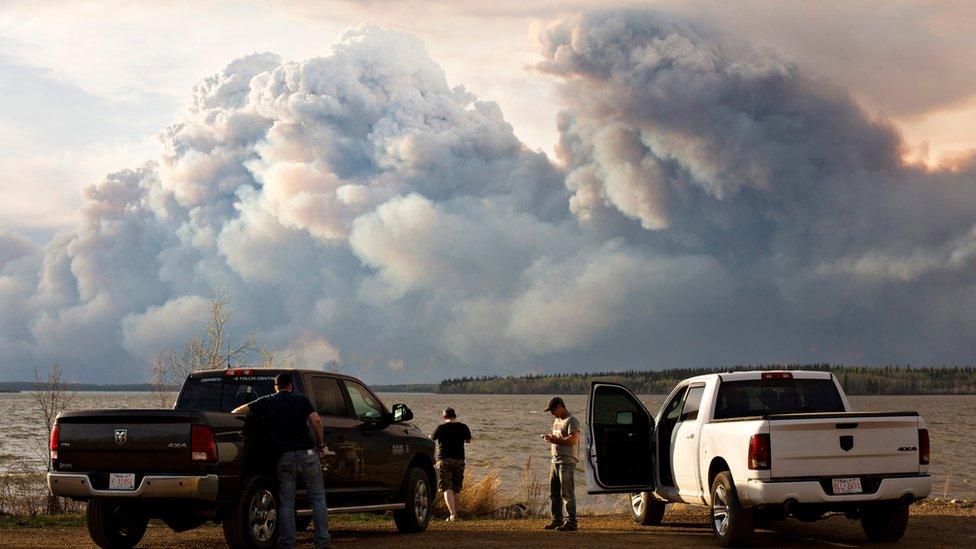Fort McMurray, one year after the massive fire known as 'The Beast'
- Published

Shop manager Sunny Katoch prepared to welcome Fort McMurray residents back last year
"The Beast" is still smouldering in the Canadian wilderness a year after the devastating inferno nearly destroyed Alberta's Fort McMurray.
Twelve months after the entire town was evacuated, the community is a long way from a full recovery.
Convenience store owner Sunny Katoch remembers handing out water and supplies to neighbours as they fled the smoke and fast-moving flames of the wildfire.
It was Alberta's largest-ever evacuation, with over 88,000 people forced to leave the Canadian oil town on a moment's notice.
Katoch's store sits at an intersection. As he and his remaining staff locked down the premises and the gas pumps, the manager "could see cars lined up to the south and to the north. It was chaos".
"I can remember the ash falling all over, flames, you could clearly see them," he recalls.
By 17:30 local time on Tuesday 3 May - just two days after the brushfire was first discovered about 20 km (12 miles) outside the city and 45 minutes before the entire town was placed under mandatory evacuation - Katoch pilled himself and two employees into his Honda and headed home to pick up his wife and two children. His car was the only one on the road heading north.
"That was not a good feeling," he says.
He collected his family left the city. The usual four-and-a-half-hour drive south to Edmonton took 14.
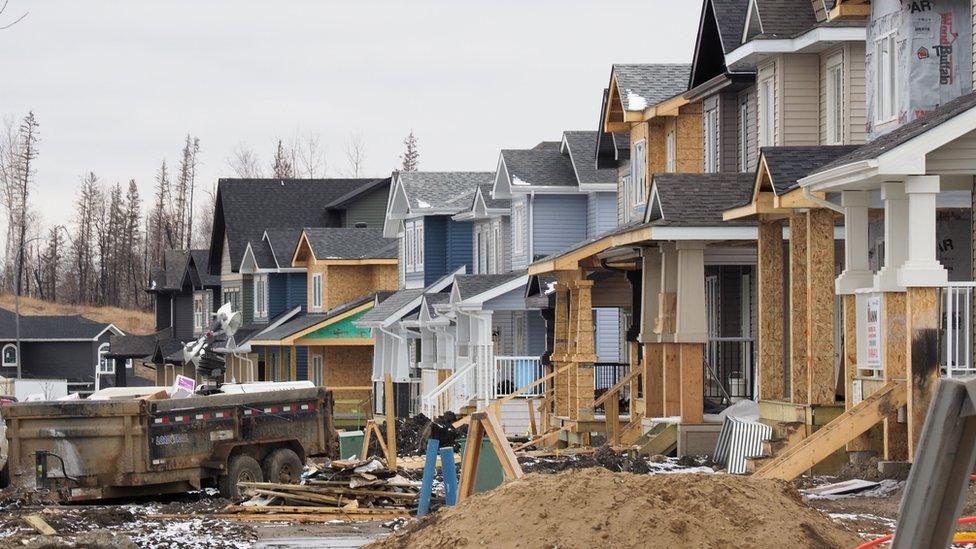
Homes are slowly being rebuilt in Fort McMurray
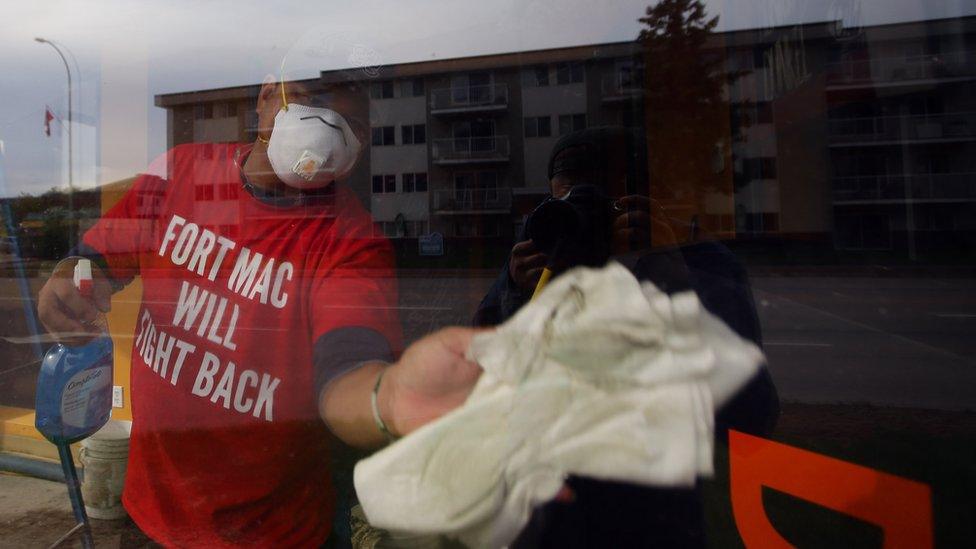
Restoration workers clean a downtown Fort McMurray shop on 3 June, 2016
Every Fort McMurray resident has a story from that day.
Families were separated, people grabbed whatever they could - whether it made sense or not - and beloved family pets were left stranded.
"The one thing that unites us all is that there's the narrative - the initial beginning - which is that everyone had to evacuate," says Jordan Redshaw, the Regional Municipality of Wood Buffalo communications manager who ran the official Twitter account throughout the crisis.
Nicknamed "The Beast" for its size and ferocity, the fire was the costliest insured natural disaster in Canada's history, with insurance costs totalling an estimated C$3.6bn (US$2.6bn/£2bn). Adding the costs to the government brings that price tag to C$5bn.
About 10% of all structures in the town were destroyed.
Despite the chaos, no one died in the fire.
Szymon Bicz had to leave most of his belongings behind in Fort McMurray
At the time, Szymon Bicz told the BBC how he and his colleagues rushed into town from their work site to grab basic necessities before fleeing the city.
"The smoke was closing in on us. It was a very, very unpleasant experience, to be honest," he said.
He was not sure whether his rental apartment would be spared by the fire.
Laura Bicker reports from Fort McMurray on the "grim aftermath" of the wildfires
His apartment "somehow survived," Bicz , who moved to Canada from Sheffield, told the BBC last week over the phone.
He recalls the rush to leave town at the fire advanced - driving on the sidewalks and grass to bypass vehicles abandoned in the escape.
"That experience was very traumatic. It was so unusual. You never get anything like this in the UK, I've never seen anything like this on such a scale. It was very, very difficult to deal with in the initial days," he says.
He says the town remains deeply affected by last year's disaster.
"Lots of people never (went) back. People keep selling the properties now," Bicz says. "Probably they don't want to put their families through that again."
But Bicz is committed to the town and brought his family over from the UK in July. He says many have pulled together in the wake of the wildfire.
"All the good people who still want to be here are here, you know?" he says.
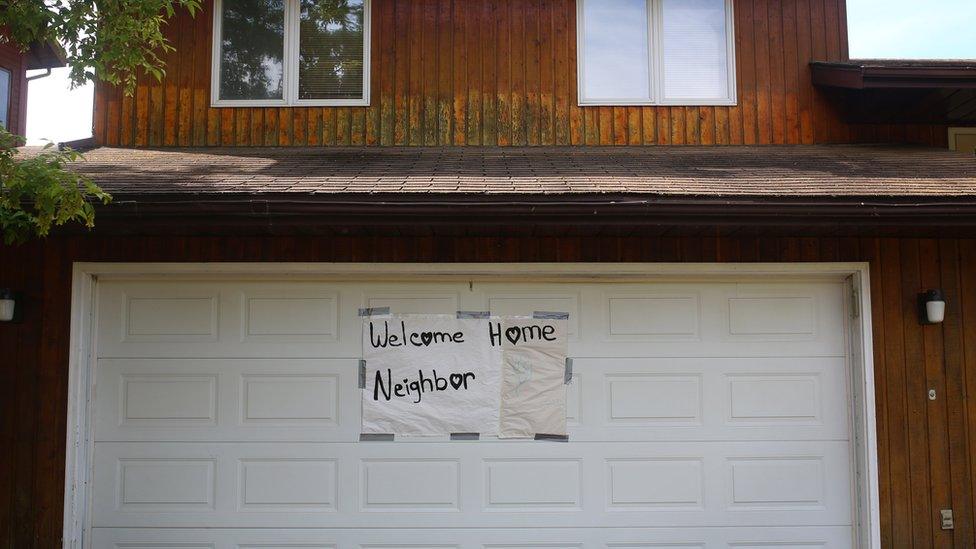
A welcome home sign left on a garage door in the Thickwood neighbourhood of Fort McMurray, Alberta on 3 June, 2016
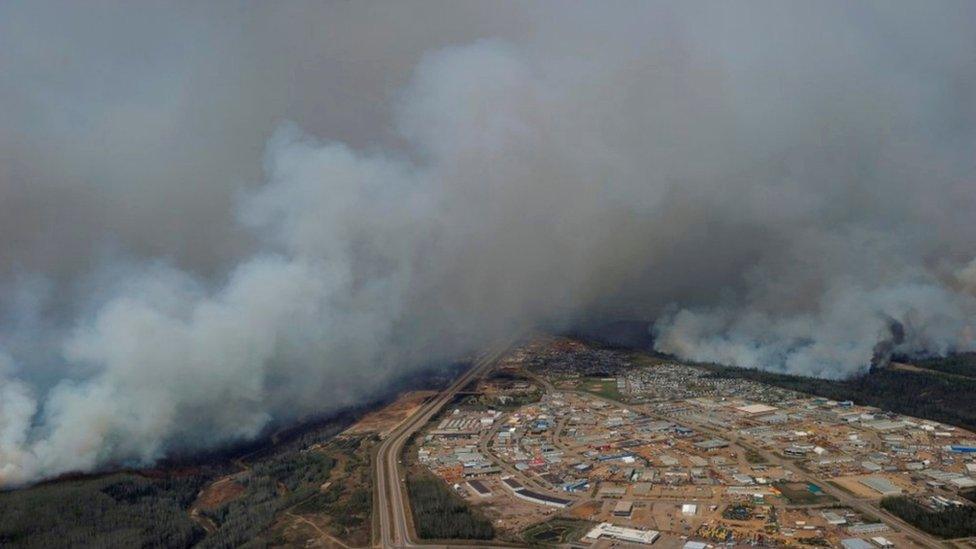
A Canadian Joint Operations Command aerial photo shows wildfires near neighborhoods in Fort McMurray, Alberta
Painter Russell Thomas recalls the morning of 3 May as "beautiful".
"There was no smoke, anything," he says. He left town early for a painting workshop and only later learned the wildfire was moving quickly towards Fort McMurray.
He rushed back to get his family but says he "hit a wall of fire and smoke as (the neighbourhood of) Beacon Hill was going up in flames".
"Traffic came to standstill and I couldn't get back to my family," says Thomas. He fled south, his family fled north, finding shelter with other residents in the oil sands work camps. They eventually caught a flight to Calgary, where he met them.
His painting supplies were still in his car and he started painting immediately. One image, a stylised portrait of now retired Fort McMurray Fire Chief Darby Allen's tired face, ended up being shared thousands of times on social media.

Russell Thomas sold prints of his painting of Fort McMurray fire chief Darby Allen for charity
"It somehow captured the Zeitgeist of the moment for people who were living through this thing," says Thomas, who thought people saw his art as a symbol of the bravery and stoicism of the fire fighters working to control the blaze.
A number of fire fighters who fought the massive wildfire have since developed respiratory problems or mental health issues, external.
Alberta wildfire authorities say the fire, which eventually spread across almost 600,000 hectares before being brought under control in July, no longer poses a danger.
When the snow has completely melted, fire fighters will scan the area to destroy any remote hot spots still remaining.
The cause of the Fort McMurray fire remains under investigation.
Fort McMurray is likely safe from another wildfire threat for years because the blaze burned much of the natural fuel that feeds forest fires.
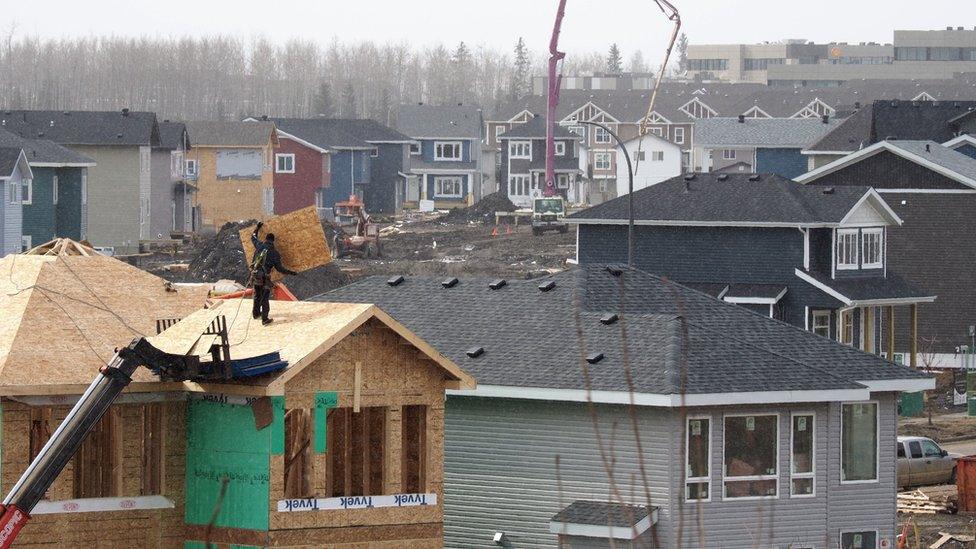
The municipality recently authorised about 650 new housing starts this year
The Thomas home was undamaged, but he says he knows many for whom process of reconstruction has been hard. Over 2,500 homes were destroyed. The AFP reported this weekend that 15,000 people had still not returned.
Initial planning estimates suggest the bulk of residential recovery will be complete by the end of 2018 - 18 months away.
Thomas says "the fact we have a community at all is in my mind a miracle".
Katoch was not one of the lucky ones. His home was among those destroyed by the flames.
"It was a heavy moment for me," he says about learning the first house the family ever owned - they had only taken possession of it in December 2015 - had been razed.
He says he sees similar strain on his neighbours' faces.
"Some of them are rebuilding their houses, some have a plan to leave the city, some are having problems with their insurance, some are having problems around health," he says.
"People are living day-to-day."
The steady decline of oil prices had already taken a toll on the oil sands-dependent economy in Fort McMurray when the fire hit, though the municipality's mayor said last week, external she did not expect the town's population to shrink.
The upcoming construction boom is also expected, external to create almost 9,000 jobs this year and will begin in earnest soon - the municipality recently issued permits for some 650 new buildings.
That is good news for Katoch, who hopes to move into his soon-to-be rebuilt home in six months.
"We try to deal with resilience and courage. Life goes on," he says.
- Published6 May 2016
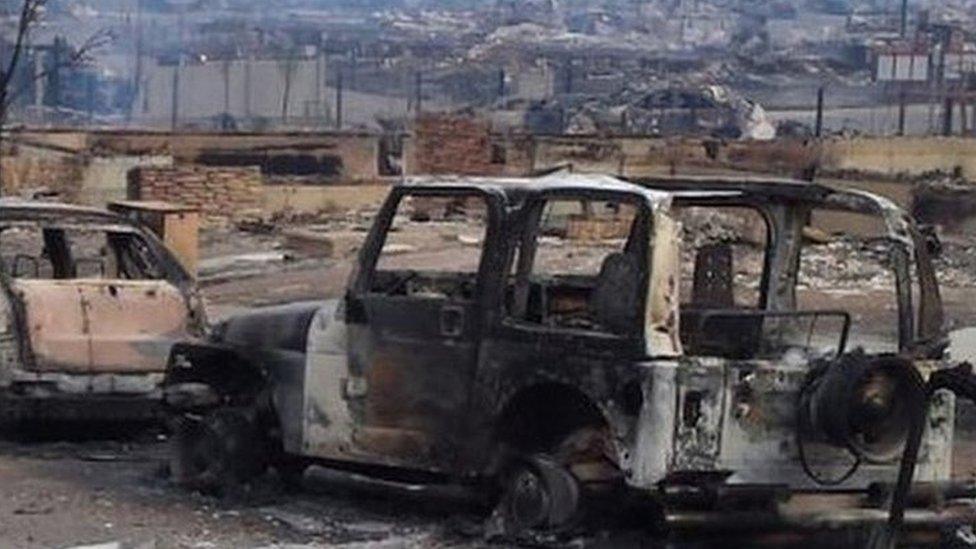
- Published1 June 2016
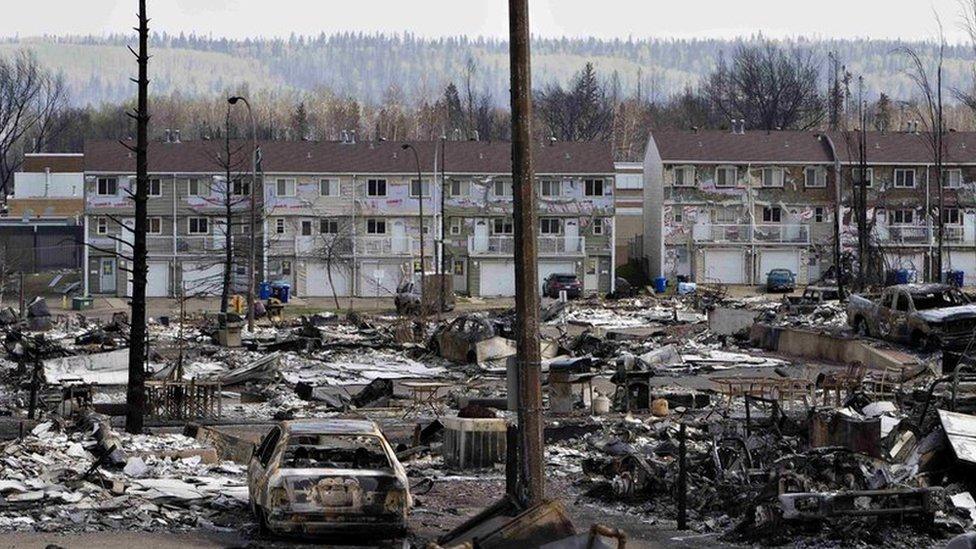
- Published5 May 2016
